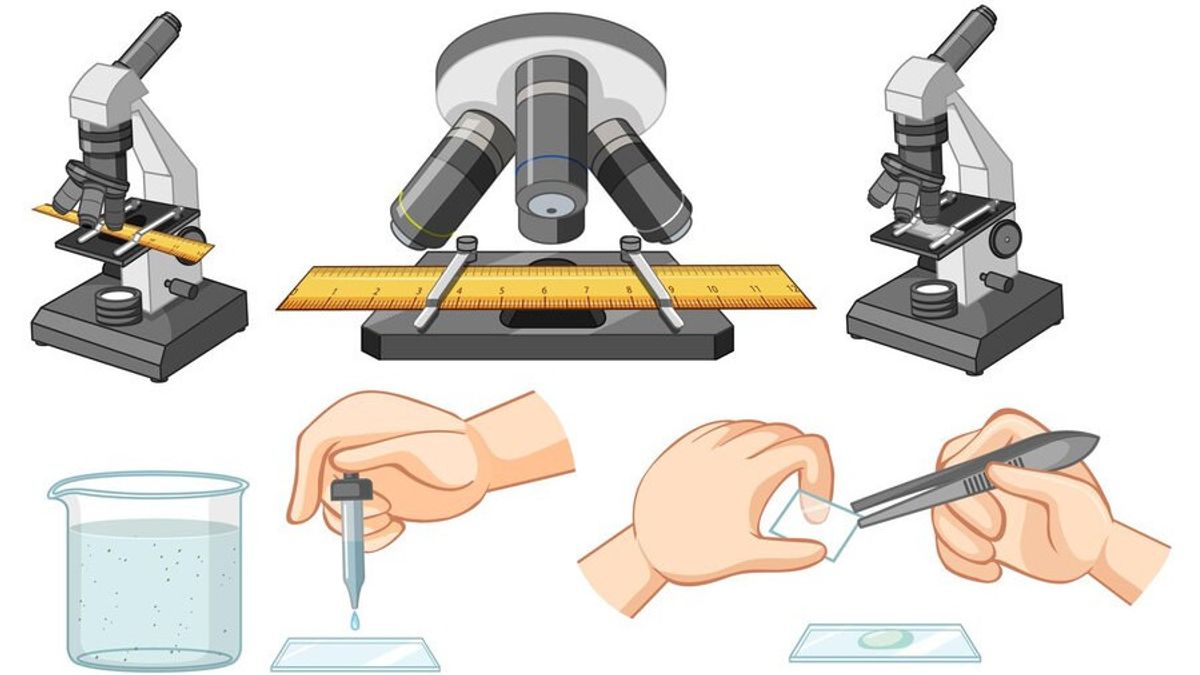YOGYAKARTA - Microscopes are optical tools that have changed the way we view a world of microorganisms that cannot be seen with the naked eye.
However, how exactly does the microscope work? And what are the parts of the microscope and its function? Each part of the microscope has a specific function that is important to produce accurate observations.
Reporting from the Microscope World page, here are some parts of the microscope and its uses:
The lens at the top you see, usually with a 10x or 15x enlargement.
Meanwhile, the function of the tube is to connect the ocular lens with the objective lens.
Supporting the tube and connecting it with a base.
The bottom of the microscope, used for support.
The steady light source (110 volts) used as a substitute for the mirror. If your microscope has a mirror, an illuminator is used to reflect light from an external light source upward through the bottom of the table.
SEE ALSO:
The flat platform where you put the glass object. Table clips hold glass objects in place. If your microscope has a mechanical table, you can move the glass object by turning two buttons. One moves it to the left and right, the other moves it up and down.
It is part of a microscope that holds back two or more objective lenses and can be rotated to easily change the enlargement.
Usually you will find 3 or 4 objective lenses in the microscope. They almost always consist of 1 of 4x, 10x, 40x, and 100x. When paired with a 10x (most common) ocular lens, the total enlargement is 40x (4x times 10x), 100x, 400x, and 1000x.
But to get a good resolution at 1000x, you need a relatively sophisticated microscope with high technology like the Abbe condensor.
This section is an adjustment that determines how close the objective lens can be to a glass object. It is arranged in the factory and prevents students from turning a high-power objective lens down into a glass object and breaking it.
You only need to adjust the stop rack if you use a very thin glass object and you can't focus on high-power specimens.
Tips: If you use a thin glass object and can't focus, instead of adjusting the shelf stopper, place a clear glass object under the original glass object to lift it slightly higher.
The lens function of the condensor is to focus light on the specimen. The lens of the condensor is most useful at the highest power (400x and above). Microscopes with in-stage condensor lenses produce sharper images than those without lenses (at 400x).
Many microscopy has a rotating disk underneath. This diaphragm has holes of different sizes and is used to vary the intensity and size of the light cone projected upwards into glass objects.
However, there are no fixed rules regarding which settings will be used for certain power. Instead, the setting is a function of specimen transparency, the level of contrast you want, and certain objective lenses used.
In addition to the part of the microscope and its function, follow other interesting articles too. Want to know other interesting information? Don't miss it, keep an eye on the updated news from VOI and follow all the social media accounts!
The English, Chinese, Japanese, Arabic, and French versions are automatically generated by the AI. So there may still be inaccuracies in translating, please always see Indonesian as our main language. (system supported by DigitalSiber.id)
















